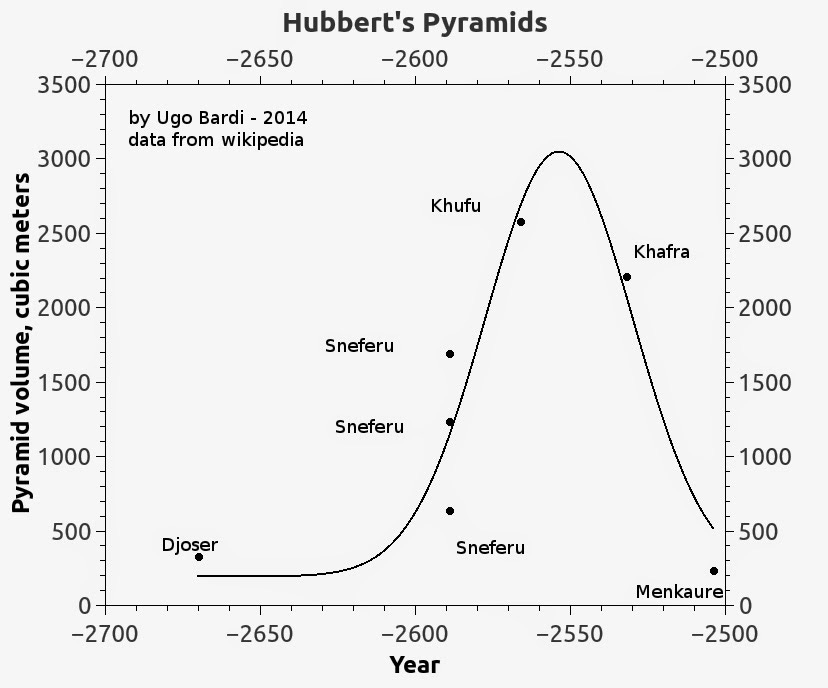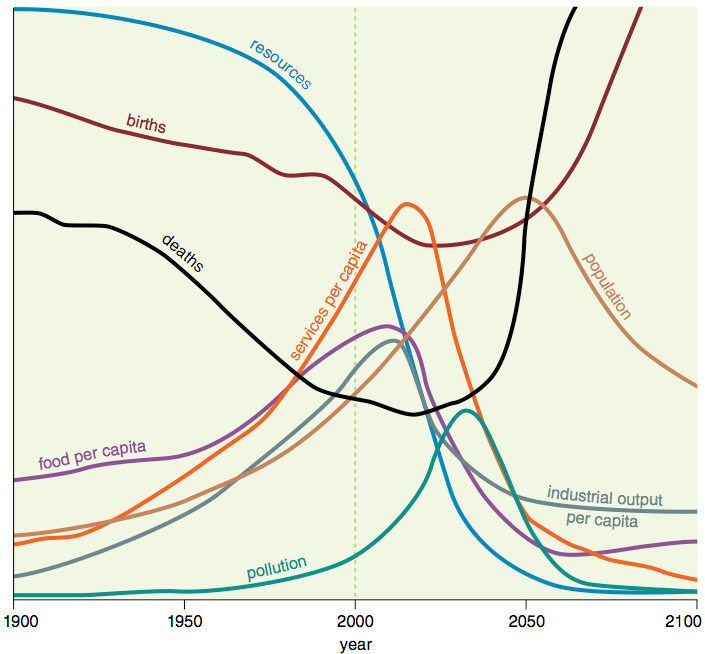The Limits to Pyramids: Growth and Collapse of the Old Kingdom
"The Pyramids Will Not Last a Moment Compared to the daisy" (D. H. Lawrence)
Ugo Bardi and his wife, Grazia, in front of the Pyramids of Giza — October 2023. Note the “Limits to Growth” t-shirt, which has much to do with the story of the Egyptian Pyramids. They were built during the burst of economic growth of the Old Kingdom (ca. 2700-2200 BC). But there were limits to this growth and, as Lucius Seneca would say much later, “The way to ruin is rapid.”
No matter how blasé we people of the 21st century can be, the pyramids of Giza are a humbling experience. I am familiar with many ancient monuments: Roman ruins, Medieval cathedrals, Renaissance art, and more. But the pyramids are something else. Imagine how they were built some 4500 years ago: you have to think of a world that was remote, small, in a certain sense primitive. Yet, it was already similar to ours, with many of the trappings of civilization already created and being used. And the capability to build these giant stone structures is still impressive for us to see. When the Ancient Egyptian civilization was rediscovered by European archaeologists in the 19th century, the impact was sensational. Now, it has faded a little, but it remains part of us. Just think how we are still making movies with Egyptian mummies waking up and walking around!
The ancient Egyptians faced the same economic opportunities and problems we have today. Evidently, they had a large economic surplus, probably coming from their advanced agricultural technologies and the fertilizing power of the Nile River. An efficient agriculture means a large population, and what to do with so many people in those periods of the year when there is no need for so much human labor? Egyptian farmers couldn’t engage in conspicuous consumption nor take overseas vacations. Even in terms of wars against neighbors, Egypt wasn’t in the right position to create an empire, being surrounded by deserts. So, the Egyptians employed their surplus to build pyramids; a form of conspicuous consumption of resources, not unlike our shopping malls.
History never repeats itself exactly, but some things never change. Civilizations grow on the available resources, then they decline — and often collapse — when they have overexploited their resource base. So, it was for the Old Kingdom: after a frantic period of pyramid building that lasted little more than a century, it was all over. The Egyptians of later periods still built pyramids, but nothing even remotely at the scale of the great pyramids of old. Here are some quantitative data taken from a previous post of mine on my blog, “Cassandra’s Legacy.” The pyramids are labeled with the name of the Pharaoh under whose reign they were built.
The data are fitted to a “bell-shaped” curve, which approximates the Hubbert curve for the depletion of a limited resource. If we take the size of the pyramids as a proxy for the size of the economy, we also see how the Egyptian economy followed a curve of the same kind that the 1972 study “The Limits to Growth” proposed for our civilization.
It is good evidence that the Egyptian economy was running out of steam; probably because of the depletion of fertile soil. In any case, the collapse was rapid. Note how the last pyramid of the cycle, the one associated with Pharaoh Menkaure, is even smaller than the first one of the cycle, the "stepped pyramid" of Pharaoh Djoser. We can see this rapid decline as a manifestation of the "Seneca Effect," a term I coined to describe economic cycles in which decline is faster than growth. Pyramid building followed the law of nature described by Seneca as, “Increases are of sluggish growth, but the way to ruin is rapid.”
h/t Ahmed Rawash, Paolo Battinelli, Helmy Abouleish, the Italian Embassy in Cairo, and the Heliopolis University. If you want a “Limits to Growth” t-shirt for your next trip to Giza, you can find it here.








maybe best commit suicide before the year 2030 why do I still go to work if it's all over if we not collapse by running out of fossil fuels we are gonna collapse by pollution or food shortages or climate change northwestern europe will fall any moment now by amoc collapse amac is weakening very fast according tho club of rome member leon simons
How would one obtain one of those T-shirts?